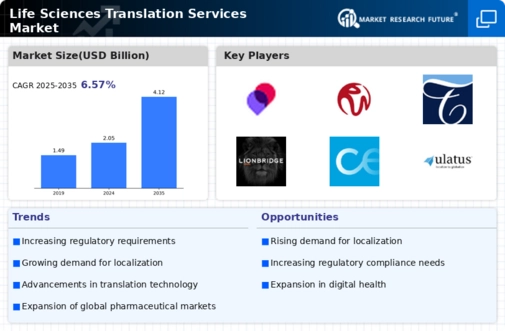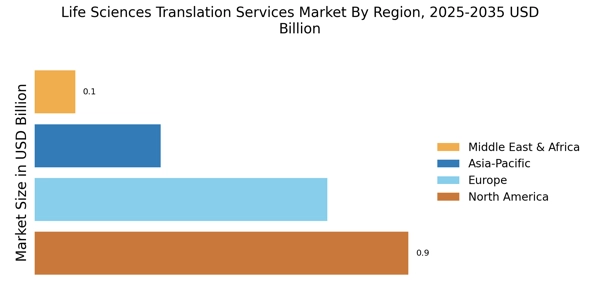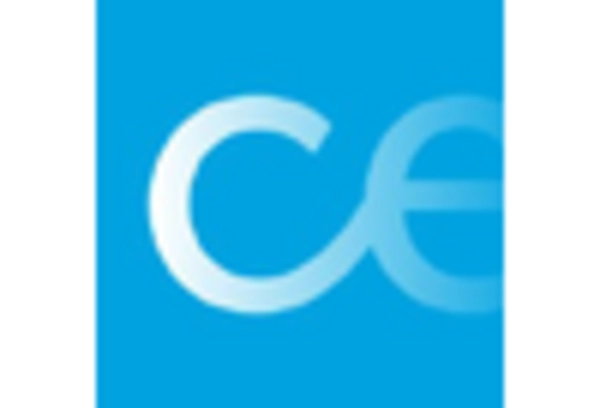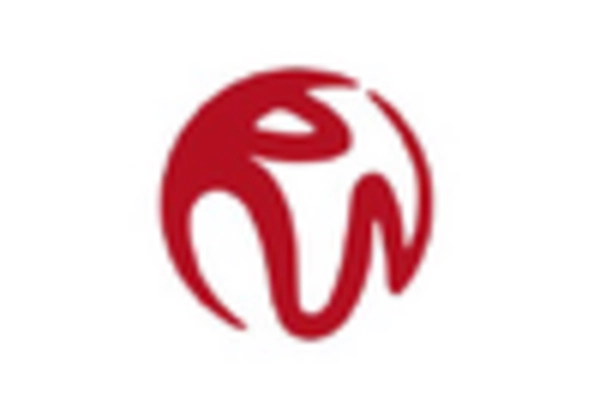Increased Regulatory Scrutiny
The Life Sciences Translation Services Market is also shaped by heightened regulatory scrutiny. Regulatory bodies are imposing stricter guidelines on the accuracy and quality of translated materials, particularly in the context of drug approvals and clinical trials. This trend necessitates that life sciences companies invest in high-quality translation services to ensure compliance with local and international regulations. Failure to adhere to these standards can result in delays and financial penalties, thereby driving the demand for specialized translation services. As regulations continue to evolve, the need for expert translation services is likely to remain a critical factor in the industry.
Expansion of Biopharmaceuticals
The expansion of the biopharmaceutical sector is a significant driver of the Life Sciences Translation Services Market. As biopharmaceutical companies develop innovative therapies, the need for precise translation of research findings, regulatory submissions, and marketing materials becomes increasingly critical. The biopharmaceutical market is projected to grow substantially, with a corresponding rise in the demand for translation services that can accurately convey complex scientific information. This growth presents opportunities for translation service providers to specialize in biopharmaceutical content, thereby positioning themselves as essential partners in the development and commercialization of new therapies.
Growing Focus on Patient Engagement
A growing emphasis on patient engagement is influencing the Life Sciences Translation Services Market. Companies are increasingly recognizing the importance of clear communication with patients, particularly in clinical trials and treatment protocols. This focus on patient-centric communication necessitates the translation of educational materials, consent forms, and other documents into multiple languages. By ensuring that patients fully understand their participation and treatment options, companies can enhance recruitment and retention rates in clinical studies. This trend is expected to drive demand for translation services that cater specifically to the needs of diverse patient populations.
Advancements in Translation Technology
Technological advancements are significantly influencing the Life Sciences Translation Services Market. The integration of artificial intelligence and machine learning into translation processes is enhancing efficiency and accuracy. These technologies enable faster turnaround times for translation projects, which is crucial in the fast-paced life sciences sector. Moreover, the use of translation memory tools allows for consistency across documents, which is vital for regulatory submissions. As the market evolves, companies that leverage these technological innovations are likely to gain a competitive edge, positioning themselves favorably in an increasingly demanding environment.
Rising Demand for Multilingual Clinical Trials
The Life Sciences Translation Services Market is experiencing a notable increase in demand for multilingual clinical trials. As pharmaceutical companies expand their research efforts across diverse regions, the need for accurate translation of clinical trial documents becomes paramount. This trend is driven by the necessity to comply with local regulations and to ensure that participants fully understand the trial protocols. According to recent data, the number of clinical trials conducted in non-English speaking countries has surged, necessitating robust translation services. This demand is expected to grow as more companies seek to engage a broader participant base, thereby enhancing the overall quality and reliability of clinical research.


















Leave a Comment